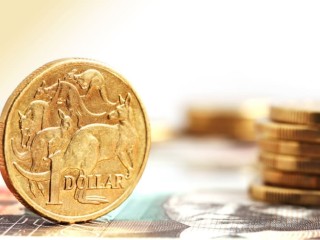 The Australian dollar has recorded its sharpest five-day rally in 32 months, putting the brakes on a three week run of below-parity rates and a period of renewed price competitiveness for Australian beef in export markets.
The Australian dollar has recorded its sharpest five-day rally in 32 months, putting the brakes on a three week run of below-parity rates and a period of renewed price competitiveness for Australian beef in export markets.
The $A has risen by almost six cents in the space of a week to visit $US 1.035c this morning.
The climb from US 97.7c last Monday represents the biggest one week rise since February 2009.
The financial media has attributed the sudden rally to a return by investors to higher-yielding currencies such as the $A on the back of reports that concerns over global economic growth are softening.
Behind the reported optimism are signs that world finance leaders are making headway in efforts to prevent Europe’s debt contagion from spreading. Finance ministers and central bankers representing the Group of 20 nations (G20), which account for 85pc of the global economy, have been meeting to develop a cooperative plan to boost global growth. The yet-to-be-announced plan is believed to include strategies to prop up ailing economies, recapitalise banks and install new rules which would prevent economic-misbehaviour in future.
G20 finance leaders are said to close to agreeing on a plan that will be unveiled at next months’ G20 summit. The argument that economic conditions are improving was also boosted by an announcement over the weekend of stronger than expected US retail sales in September.
However not all financial analysts buy the theory that economic recovery is around the corner, and say many indicators still point to further deterioration ahead. Among them is the Wall Street Journal (Dollar's slide is unconvincing) which questioned whether the latest rally in the Australian dollar was built on solid foundations, and suggested that if optimism fizzles investment could just as quickly flow back to the US$.
Either way, significant volatility has emerged as a prevailing norm in the current climate of global economic uncertainty.
Within the past year, the Australian dollar has ranged from a low of US92c to a high of US110c.
Large and rapid currency swings within that range have created headaches for exporters trying to budget or forecast what returns should be.
Steve Kelly from Nippon Meat Packers told Beef Central this morning that volatility of the current scale was highly unusual compared with historical trends. Ten years ago a movement of 100 points was considered substantial, whereas today movements of 300 or 400 points can occur within one or two days.
“The movements that we’re seeing, they’re quite substantial over short periods of times,” Mr Kelly said. “Any movement in the currency does affect returns for exporters.”
While a higher Australian dollar meant reduced returns in currency terms, it was a reality exporters had been forced to adjust to this year, he said.
“We have been dealing with a dollar that has been above parity for some time, and as exporters we have been able to deal with that.”
